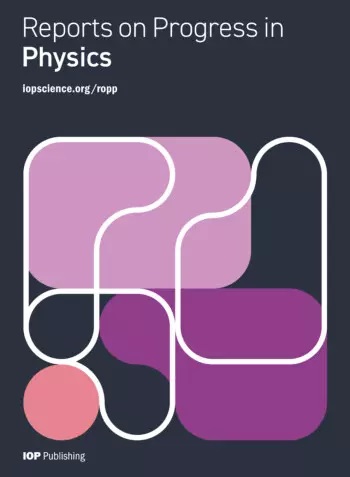Anti-hyperuniform critical states of active topological defects.
IF 20.7
1区 物理与天体物理
Q1 PHYSICS, MULTIDISCIPLINARY
引用次数: 0
Abstract
Topological defects are fundamental to the collective dynamics of non-equilibrium systems and in active matter, mediating spontaneous flows, dynamic self-organization, and emergent pattern formation. Here, we reveal critical states in active nematics, marked by slowed defect density relaxation, amplified fluctuations, and heightened sensitivity to activity. Near criticality, defect interactions become long-ranged, scaling with system size, and the system enters an anti-hyperuniform regime with giant number fluctuations of topological defects and defect clustering. This transition reflects a dual scaling behavior: fluctuations are uniform at small scales but become anti-hyperuniform at larger scales, as supported by experimental measurements on large-field-of-view endothelial monolayers. We find that these anti-hyperuniform states with multiscale defect density fluctuations are robust to varying parameters, introducing frictional damping, and changing boundary conditions. Finally, we show that the observed anti-hyperuniformity originates from defect clustering, distinguishing this transition from defect-unbinding or phase separation processes. Beyond fundamental implications for non-equilibrium systems, these results may inform biological contexts where topological defects are integral to processes such as morphogenesis and collective cellular self-organization.有源拓扑缺陷的反超均匀临界态。
拓扑缺陷是非平衡系统和活性物质集体动力学的基础,介导自发流动,动态自组织和紧急模式形成。这里,我们揭示了主动向列中的临界状态,其特征是缺陷密度松弛减慢,波动放大,对活性的敏感性提高。在接近临界时,缺陷相互作用变得长范围,随着系统规模的扩大而扩大,系统进入一个具有大量拓扑缺陷波动和缺陷聚类的反超均匀状态。这种转变反映了双重尺度行为:波动在小尺度上是均匀的,但在大尺度上变得反超均匀,这得到了大视场内皮单层的实验测量的支持。我们发现这些具有多尺度缺陷密度波动的反超均匀态对参数变化、引入摩擦阻尼和边界条件变化具有鲁棒性。最后,我们证明了观察到的反超均匀性源于缺陷聚类,将这种转变与缺陷解除结合或相分离过程区分开来。除了对非平衡系统的基本含义之外,这些结果可能为生物学背景提供信息,其中拓扑缺陷是形态发生和集体细胞自组织等过程的组成部分。
本文章由计算机程序翻译,如有差异,请以英文原文为准。
求助全文
约1分钟内获得全文
求助全文
来源期刊

Reports on Progress in Physics
物理-物理:综合
CiteScore
31.90
自引率
0.00%
发文量
45
审稿时长
6-12 weeks
期刊介绍:
Reports on Progress in Physics is a highly selective journal with a mission to publish ground-breaking new research and authoritative invited reviews of the highest quality and significance across all areas of physics and related areas. Articles must be essential reading for specialists, and likely to be of broader multidisciplinary interest with the expectation for long-term scientific impact and influence on the current state and/or future direction of a field.
 求助内容:
求助内容: 应助结果提醒方式:
应助结果提醒方式:


